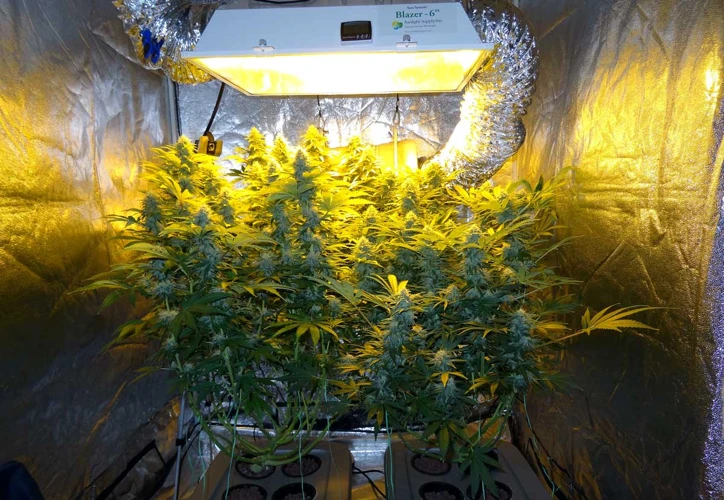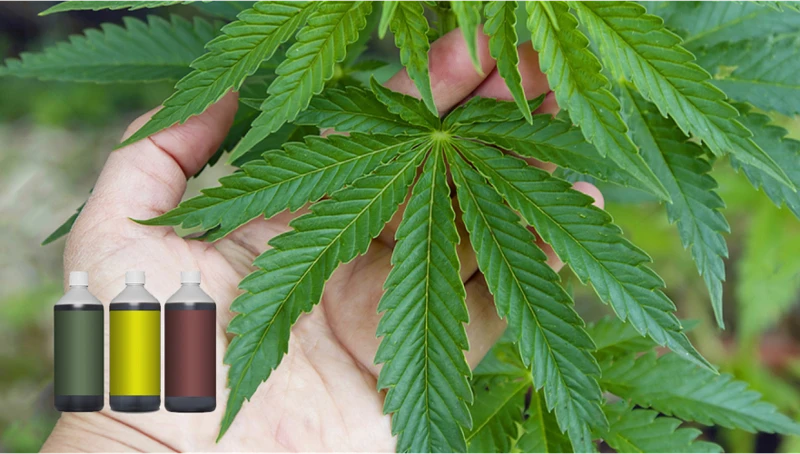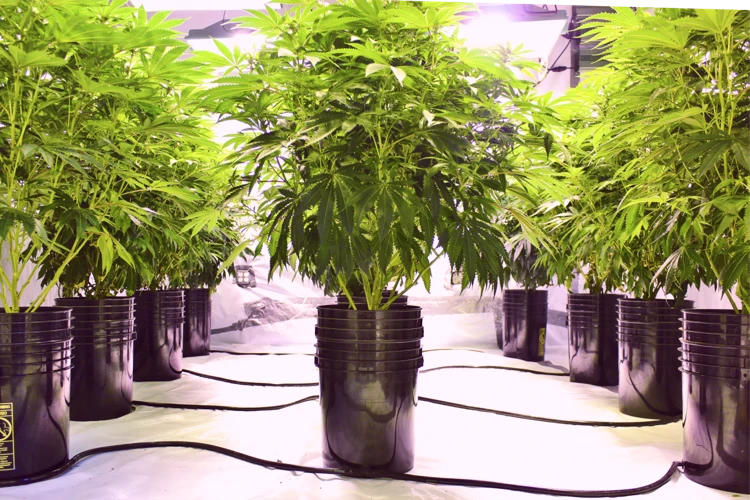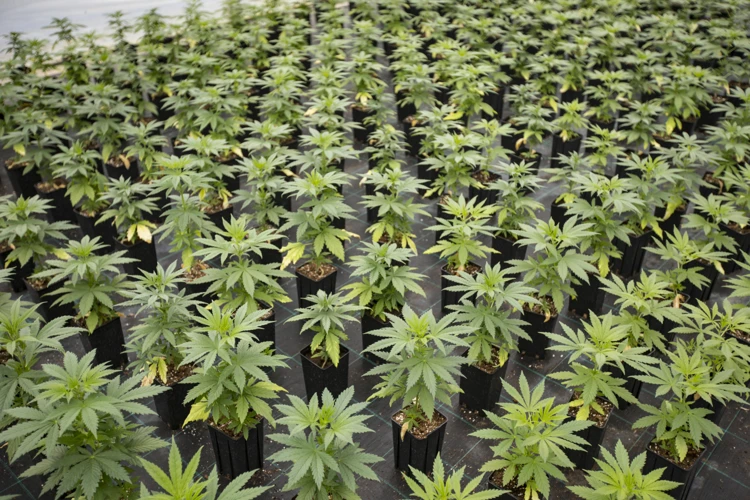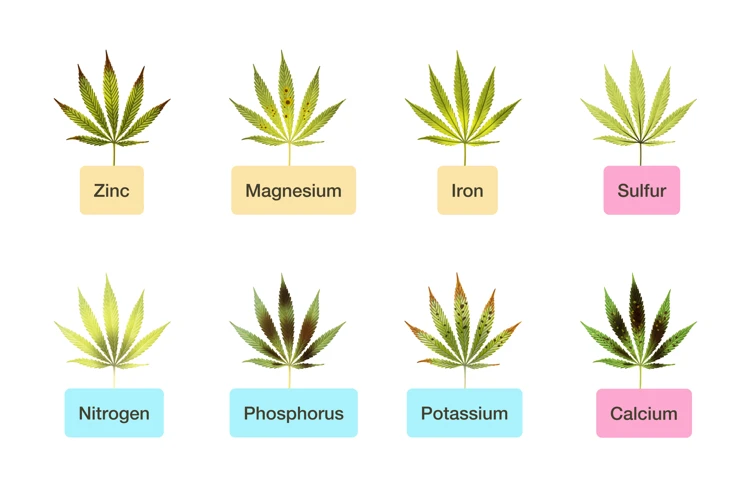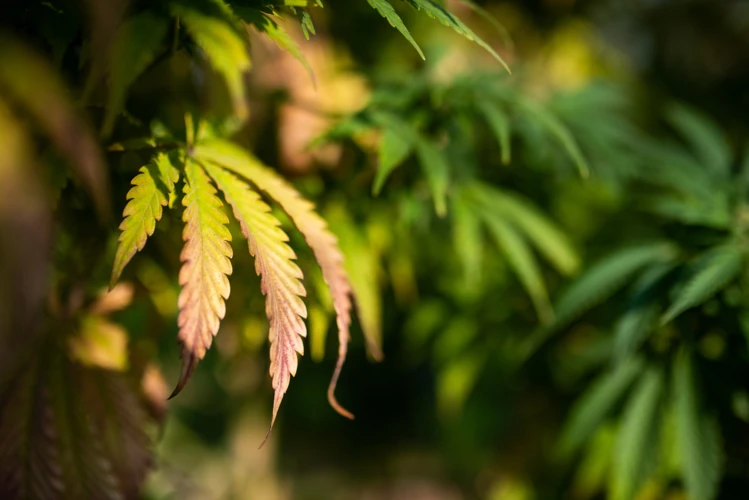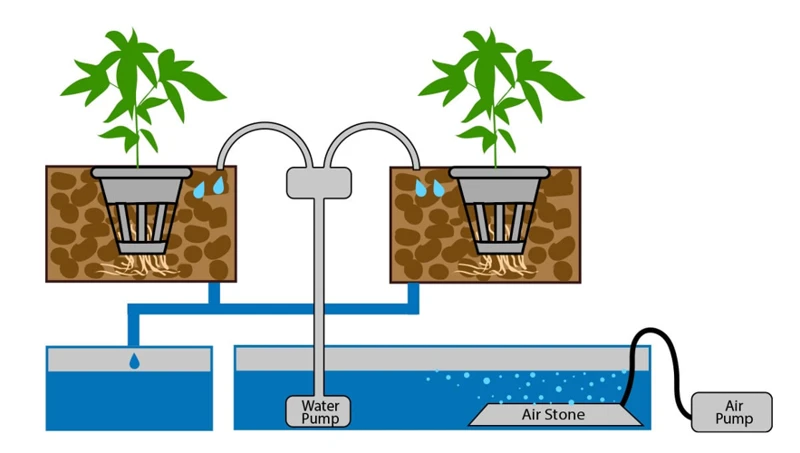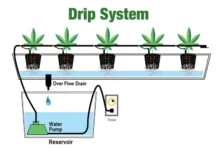
Top Hydroponic Cannabis Feeding Mistakes to Avoid
Introduction
Contents
Starting a hydroponic cannabis garden can be an exciting and rewarding journey, but it’s important to approach it with caution and education to avoid potential mistakes. One of the key aspects of hydroponic growing is feeding, as it directly impacts the health and yield of your plants. However, with so many complex factors to consider, it’s easy to make mistakes along the way. In this guide, we’ll explore the top hydroponic cannabis feeding mistakes to avoid and provide actionable tips for success.
What is hydroponic cannabis growing?
Hydroponic cannabis growing is the method of cultivating cannabis plants in a controlled indoor environment, without the use of soil. Instead, the plants are grown in a nutrient-rich water solution that provides them with everything they need to grow and thrive. This method of growing is becoming increasingly popular among cannabis growers due to the many benefits it offers. Here are a few key things to know about hydroponic cannabis growing:
1. Increased growth rates: Cannabis plants grown hydroponically tend to grow faster than those grown in soil. This is because the plants are able to absorb nutrients more efficiently from the water solution.
2. More control over growing conditions: With hydroponic growing, growers have more control over variables such as light, temperature, and humidity levels. This allows for more consistent growth and higher yields.
3. Reduced risk of pests and disease: Growing cannabis in soil can make it more susceptible to pests and disease. Hydroponic growing, on the other hand, eliminates the need for soil and can greatly reduce these risks.
4. Higher yields: With the precise control over growing conditions, nutrient levels, and other variables that hydroponic growing allows, growers can often achieve higher yields than with other growing methods.
Hydroponic cannabis growing is a highly efficient and effective method of cultivating healthy and high-quality cannabis plants. While there may be a learning curve when it comes to mastering the technique, the benefits it offers make it well worth the effort for many growers.
Why is feeding important?
Feeding cannabis plants in a hydroponic system is a crucial aspect of their growth and development. Proper feeding ensures that the plants receive the necessary nutrients to flourish and produce high-yielding buds.
Without proper feeding:
- Cannabis plants may not receive adequate nutrition, leading to stunted growth and reduced yield
- Nutrient deficiencies or excess can cause a variety of issues such as yellowing leaves, stunted growth or plant death
- Plants may be more susceptible to diseases and pests
It is essential to provide the right nutrients in the correct quantities to achieve optimal growth and yield. One important aspect of hydroponic feeding is the need to monitor and maintain pH and EC levels. These factors can impact nutrient absorption and plant health. By avoiding common feeding mistakes, growers can foster healthy plants that produce high-quality cannabis buds.
Mistake 1: Overfeeding
One of the most common mistakes in hydroponic cannabis growing is overfeeding. This can be perplexing for new growers who may assume that more nutrients equate to better plant growth. However, overfeeding can have detrimental effects on the health and yield of your cannabis plants. In this section, we’ll explore the dangers of overfeeding and provide tips on how to avoid this mistake.
The dangers of overfeeding
Overfeeding your hydroponic cannabis plants can lead to serious damage and sometimes even death. It’s important to understand the possible consequences of overfeeding so that you can avoid making this common mistake. Here are some of the dangers of overfeeding:
| Burnt Roots | Overfeeding can cause nutrient build-up in the root zone, which can lead to burnt roots. When the roots are damaged, they cannot take in water and nutrients effectively, which can ultimately result in stunted growth and poor yields. |
| Nutrient Lockout | When your plants receive too much of one nutrient, it can cause a lockout of other essential nutrients. This means that your plants are unable to absorb the nutrients they need to grow properly, even if those nutrients are present in the solution. This can lead to deficiencies and poor growth. |
| Leaf Burn | Overfeeding can also cause leaf burn, which appears as brown or yellow patches on the leaves. This is caused by an excess of nutrients in the leaf tissue and can eventually lead to leaf death. When the leaves die, the plant loses its ability to photosynthesize, which can reduce yields. |
| Reduced Yields | Overfeeding can ultimately lead to reduced yields as the plant becomes stressed and unable to grow to its full potential. You may also see a decrease in the potency and quality of your cannabis if you overfeed. |
To avoid overfeeding your hydroponic cannabis plants, be sure to follow the recommended feeding schedule for your particular system and strain. Always start with a lower dose and gradually increase as needed, keeping a close eye on your plants and their response to the nutrients. Remember, less is often more when it comes to hydroponic feeding.
How to avoid overfeeding
To avoid overfeeding your hydroponic cannabis plants, here are some steps you should follow:
- Start with a low dosage: When introducing nutrients to your plants, always start with a lower dosage than what is recommended on the packaging. This will give you a chance to see how your plants react and avoid overfeeding.
- Monitor your plants: Keep a close eye on your plants and look for any signs of nutrient burn or toxicity such as yellowing leaves, brown tips or curling leaves.
- Check pH levels: Make sure to regularly check the pH levels of your nutrient solution to ensure that nutrients are being properly absorbed by your plants. Nutrient lockout can occur if the pH levels are too high or too low which can lead to overfeeding.
- Adjust feeding schedule: If you notice any signs of overfeeding, adjust your feeding schedule accordingly. This might mean reducing the dosage or even skipping a feeding cycle to give your plants a chance to recover.
- Flush your system: Sometimes, overfeeding can be caused by a buildup of salts and minerals in your system. Flushing your system with clean water will help to reduce the buildup and prevent overfeeding.
By following these steps, you can avoid overfeeding your hydroponic cannabis plants and ensure that they receive the proper amount of nutrients for healthy growth.
Mistake 2: Underfeeding
One of the most common mistakes that novice hydroponic cannabis growers make is not feeding their plants enough nutrients. This can result in stunted growth and a lower yield, which can be frustrating for growers. Underfeeding is a serious mistake that can be easy to make, and it is important to understand the dangers associated with it and how to avoid it. Let’s explore the potential consequences of underfeeding your hydroponic cannabis plants and what steps you can take to ensure you are providing them with the correct amount of nutrients.
The dangers of underfeeding
Underfeeding hydroponic cannabis plants can have detrimental effects on their growth and development. Some of the dangers of underfeeding include:
- Stunted growth: Plants that do not receive enough nutrients will not grow as quickly or as tall as they should, resulting in a smaller overall yield.
- Nutrient deficiencies: Plants lacking essential nutrients may exhibit symptoms such as yellowing or browning of leaves, slowed growth, and reduced flowering or fruiting.
- Vulnerability to pests and diseases: Underfed plants may have lower immunity to common pests and diseases, leading to infestations or infections that can harm or kill the plant.
- Delayed maturation: Plants that are not properly fed may take longer to mature and produce flowers, resulting in a later harvest and potentially lower yields.
In order to avoid underfeeding, it is important to regularly monitor nutrient levels and adjust accordingly. It may also be helpful to use a high-quality nutrient solution specifically designed for hydroponic cannabis growth, and to follow a feeding schedule based on the plant’s stage of development. Additionally, ensuring that the pH and EC levels of the nutrient solution are within the appropriate ranges can help prevent nutrient deficiencies and underfeeding.
How to avoid underfeeding
To avoid underfeeding your hydroponic cannabis plants, you need to ensure that they are receiving the right amount of nutrients they require.
1. Set a Feeding Schedule: Setting a feeding schedule ensures that your plants receive nutrients at regular intervals. Typically, plants require nutrients every 2-3 days, depending on the stage of growth.
2. Monitor pH levels: Ensure that the pH levels of your nutrient solution are within the optimal range of 5.5-6.5. This helps to ensure that the plants’ roots can effectively absorb the nutrients they need.
3. Monitor EC levels: Measure the electrical conductivity of your nutrient solution to ensure that your plants are receiving the right amount of nutrients. EC levels that are too low can lead to underfeeding, while levels that are too high can lead to overfeeding.
4. Read nutrient labels: Be sure to read and understand the nutrient label before adding any nutrients to your solution. Follow the manufacturer’s recommended dosage guidelines and adjust as necessary based on plant growth and development.
5. Start with a Dilute Solution: It’s best to start with a weak nutrient solution and gradually increase it as the plants grow. This helps avoid overwhelming the plants with too many nutrients at once.
6. Observe Plant Growth: Monitor your plants for signs of underfeeding, such as stunted growth or yellowing leaves. Adjust your feeding schedule or nutrient levels accordingly to ensure that they are receiving the nutrients they need.
By following these tips, you can avoid underfeeding your hydroponic cannabis plants and ensure that they grow strong and healthy.
Mistake 3: Poor pH Balance
Maintaining proper pH balance is essential for hydroponic cannabis cultivation. Ignoring pH levels can cause a range of issues, including nutrient deficiencies and toxicity, stunted growth, and reduced harvest yield. It is vital to pay attention to pH levels throughout the growing process. In this section, we will explore the importance of pH balance in hydroponic growing and how to ensure the proper pH balance for your cannabis plants.
The importance of pH balance in hydroponic growing
Maintaining proper pH balance is crucial for successful hydroponic cannabis growing. pH affects nutrient uptake, plant growth, and overall health. When the pH is too high or too low, plants cannot absorb essential minerals and nutrients, leading to deficiency or toxicity. Here are some reasons why pH balance is important in hydroponic growing:
- Optimal nutrient uptake: The pH level determines the availability of nutrients in the growing medium. When pH is out of the optimal range, plants cannot absorb nutrients, even if they are present in the correct levels.
- Healthy root development: Maintaining a proper pH level helps prevent damage to the root system. Roots are sensitive to pH levels and can be damaged or killed by extreme pH fluctuations.
- Prevention of nutrient lockout: If pH levels are too high or too low, nutrients can become locked out of the growing medium, preventing them from being absorbed by the plants.
- Prevention of disease: Certain diseases thrive in environments where pH levels are not optimal, so keeping pH levels in the correct range can help prevent disease in hydroponic systems.
Monitoring and adjusting pH levels should be a top priority for hydroponic cannabis growers. Regular testing of the nutrient solution is necessary to maintain proper pH balance. Adjustments can be made using pH adjusting solutions or buffers, such as citric acid and potassium hydroxide. By maintaining optimal pH levels, growers can avoid nutrient deficiencies, toxicity, and other issues that can negatively impact plant health and yield.
How to maintain proper pH balance
Maintaining proper pH balance is crucial for successful hydroponic cannabis growth. Here are some steps you can take to ensure your pH levels stay in check:
- Obtain a quality pH meter: Invest in a reliable pH meter to accurately measure the pH of your nutrient solution. Make sure to calibrate your meter regularly.
- Check pH levels regularly: Ideally, you should check the pH of your nutrient solution daily. This will help you catch any changes early on and make adjustments as needed.
- Adjust pH levels gradually: If you need to raise or lower the pH of your nutrient solution, make adjustments gradually. Aim to raise or lower the pH no more than 0.1 per adjustment, as larger changes can shock the plants.
- Use pH-adjusting solutions: To raise or lower the pH of your nutrient solution, use pH-adjusting solutions that are specifically designed for hydroponic growing.
- Keep track of nutrient water temperature: Temperature can affect pH levels, so make sure to keep track of the temperature of your nutrient solution and make adjustments as needed.
By following these steps and staying vigilant about your pH levels, you can avoid the negative consequences of poor pH balance and give your plants the best possible chance for a successful harvest.
Mistake 4: Not Adjusting Nutrient Levels
One of the crucial factors that determine the success of hydroponic cannabis cultivation is the nutrient levels. However, failing to adjust the nutrient levels can be a grave mistake that can adversely affect the growth and quality of your plants. If you have been struggling with achieving the desired results from your hydroponic cannabis system, but have not been adjusting the nutrient levels, then this section is for you. Read on to learn about the impact of nutrient levels on plant growth and how to properly adjust them for optimal results.
The impact of nutrient levels on plant growth
Proper nutrient levels are crucial to the growth and development of your hydroponic cannabis plants. Overfeeding can lead to toxic buildups and nutrient lockout, while underfeeding can result in stunted growth and decreased yield. It is important to find a balance when feeding your plants to ensure that they receive the necessary nutrients without being overwhelmed.
Nutrients help to provide the necessary elements for plant growth and development, including nitrogen, phosphorus, and potassium, as well as various micronutrients. These elements work together to promote proper vegetative growth, bud development, and overall plant health.
When it comes to cannabis, different nutrient levels are needed during different stages of growth. During the vegetative stage, plants require higher levels of nitrogen to promote leafy growth. However, during the flowering stage, elevated levels of phosphorus and potassium are necessary for the development of healthy buds.
It is important to monitor your plants’ nutrient levels regularly to ensure that they are receiving the appropriate amounts. Over time, nutrient levels can become depleted or imbalanced, which can negatively impact plant growth and ultimately result in decreased yield.
Adjusting nutrient levels can be done by adding specific nutrients to your hydroponic system, whether in liquid or powder form. It is important to follow the recommended dosages for each nutrient and to avoid overfeeding, as this can lead to toxic buildup and nutrient lockout.
By properly managing your nutrient levels, you can ensure that your hydroponic cannabis plants are receiving the essential elements needed for healthy growth and development, resulting in optimal yields.
How to adjust nutrient levels properly
Properly adjusting nutrient levels is crucial for healthy plant growth in hydroponic cannabis growing. Here are some steps to follow to ensure nutrient balance:
- Test your water: Before adding any nutrients, test the pH and EC levels of your water source. This will give you a baseline to work with.
- Calculate your target nutrient levels: Based on the growth stage of your plants, calculate the ideal nutrient levels for each element (such as nitrogen, potassium, and calcium).
- Mix nutrients with water: Follow the instructions on your nutrient package to determine how much of each nutrient to add to your water. Use a separate container to mix your nutrients before adding them to your hydroponic system.
- Monitor and adjust: Use a pH and EC meter to monitor the levels in your hydroponic system. Adjust nutrient levels as needed to maintain proper levels for optimal growth.
- Flush the system: After several weeks of nutrient use, it’s important to flush the system with plain water to prevent nutrient buildup and ensure better nutrient uptake in plants.
Remember, adjusting nutrient levels is not a one-time process. It requires ongoing attention and monitoring to ensure that your plants have the nutrients they need at every stage of growth.
Mistake 5: Not Monitoring EC Levels
Maintaining the proper electrical conductivity (EC) levels in hydroponic cannabis growing is vital for maximizing plant growth and yield. However, neglecting to monitor these levels is a common mistake made by inexperienced growers. Without proper monitoring, the EC levels can easily become imbalanced, resulting in stunted growth, nutrient deficiencies, or nutrient toxicity. In this section of the article, we will explore the role of EC levels in hydroponic growing, the consequences of not monitoring them, and the steps to take to ensure they remain properly balanced.
The role of EC levels in hydroponic growing
Electrical conductivity (EC) levels are critical for proper nutrient management in hydroponic cannabis growing. EC measures the concentration of nutrient salts in the hydroponic solution, which is a key indicator of plant health.
EC levels can impact plant growth in several ways:
| EC Level | Effect on Plants |
|---|---|
| Too low | Plants may be undernourished and grow slowly |
| Too high | Plants may experience nutrient burn, which can lead to stunted growth or even death |
| Fluctuating | Plants may become stressed and vulnerable to disease or pests |
Monitoring and adjusting the EC levels: is a critical part of hydroponic cannabis growing. In most cases, EC levels should be maintained between 1.5-2.5 mS/cm during the vegetative stage and between 2.5-3.5 mS/cm during the flowering stage.
To maintain proper EC levels, growers can use an EC meter to measure the nutrient concentration in the water. If the levels are too high, growers can add plain water to dilute the nutrient solution. If the levels are too low, growers can add more nutrients to the solution.
It’s important to note that the ideal EC levels may vary depending on the specific strain of cannabis being grown, as well as environmental factors like temperature and humidity. It’s essential to monitor EC levels regularly and make adjustments as necessary to ensure optimal plant growth and health.
How to monitor and adjust EC levels
To ensure proper nutrient levels, it’s important to monitor and adjust the electrical conductivity (EC) levels of your hydroponic system. EC measures the concentration of nutrients in the water, so it’s important to keep it within the appropriate range for optimal plant growth.
There are a few ways to monitor EC levels, including using a handheld EC meter, a continuous monitoring system, or test strips. Handheld EC meters are the most accurate, but also the most expensive option. With a continuous monitoring system, you can easily track changes in EC levels over time. Test strips are the most affordable option, but they may not be as accurate as the other methods. Whichever method you choose, be sure to test the water regularly to ensure you’re providing the right nutrient levels for your plants.
If you find that the EC levels are too high or low, it’s important to adjust them to ensure optimal plant growth. To lower the EC level, simply add plain water to your nutrient solution. To raise the EC level, you can add more nutrients to the solution. When adjusting EC levels, it’s important to make small changes and test the water again before making further adjustments. This will help avoid over or underfeeding your plants, which can have negative effects on their growth and yield.
Monitoring and adjusting EC levels may seem like a small task, but it can have a big impact on your hydroponic cannabis plants. By keeping your nutrient levels within the appropriate range, you can ensure that your plants are receiving the necessary nutrients for optimal growth and yield.
| Method | Pros | Cons |
|---|---|---|
| Handheld EC meter | Most accurate | Most expensive |
| Continuous monitoring system | Easy tracking of changes over time | Can be costly |
| Test strips | Most affordable | May not be as accurate |
Mistake 6: Using the Wrong Nutrients
When it comes to hydroponic cannabis growing, providing the right nutrients is crucial for healthy plant development and a bountiful harvest. However, using the wrong nutrients can have detrimental effects on your crops. It’s important to consider the composition and concentration of nutrients, as well as the specific needs of your plants. In this section, we’ll explore common mistakes associated with nutrient choice and how to avoid them to ensure optimal plant growth and yields.
The dangers of using incorrect nutrients
Using incorrect nutrients in hydroponic cannabis growing can have detrimental effects on the plant’s health and yield. Here are some of the potential dangers to be aware of:
- Stunted growth: Using incorrect nutrients can stunt the growth of your plants, resulting in smaller yields and lower quality buds.
- Nutrient deficiency: Different strains of cannabis have different nutrient requirements, and using the wrong nutrients can lead to deficiencies in essential minerals like nitrogen, phosphorus, and potassium.
- Burned roots: Overapplication of nutrients, especially those high in salt like some fertilizers, can lead to burned roots and plant stress.
- Unwanted chemicals: Using synthetic nutrients can introduce unwanted chemicals to the growing environment, which can impact the taste and smell of the final product.
To avoid these dangers, it’s important to choose the right nutrients for your plants and to follow the manufacturer’s instructions carefully. It’s also worth considering using organic nutrients, which are typically safer for both the plants and the environment. Regular monitoring and adjustment of nutrient levels is also necessary to ensure your plants are receiving the correct balance of minerals for optimal growth and yield.
How to choose the right nutrients for your plants
When it comes to choosing the right nutrients for your hydroponic cannabis plants, there are a few key factors to consider. Each plant has specific nutritional needs, and finding the right balance of nutrients can be the difference between a successful harvest and a disappointing one.
Nutrient Levels: Before choosing a nutrient solution, it’s important to know what your plants need. Different strains have different nutrient requirements, and it’s important to find out what your specific strain needs in terms of nitrogen, phosphorus, and potassium. This information can often be found on seed packaging or through online research.
Type of Nutrient: There are two main types of nutrient solutions: organic and synthetic. Organic nutrients come from natural sources such as fish emulsion or bat guano, while synthetic nutrients are created through chemical processes. Many growers prefer organic nutrients as they are often more sustainable and easier to absorb for the plants.
pH Levels: Nutrient uptake can be affected by the pH level of the solution, so it’s important to choose a nutrient solution that is pH balanced. It’s also important to regularly monitor the pH level of the solution and adjust as necessary to ensure optimal absorption by the plants.
Brand Reputation: When choosing a nutrient solution, it’s important to do research on the brand’s reputation. Look for brands with a track record of success and positive reviews from other growers. It’s also helpful to look for brands that offer comprehensive feeding schedules and customer support.
Price: While price should never be the only factor when choosing nutrients, it’s important to consider the cost in relation to the quality of the product. Cheaper nutrient solutions may not be as effective as higher-end brands, and it’s important to weigh the cost against potential yield and plant health.
Here is an html table that summarizes the factors to consider when choosing the right nutrient for your hydroponic cannabis plants:
| Factor | Description |
|---|---|
| Nutrient Levels | Determine your plants’ specific needs for nitrogen, phosphorus, and potassium. |
| Type of Nutrient | Choose between organic and synthetic nutrient solutions. |
| pH Levels | Find a nutrient solution that is pH balanced and monitor regularly. |
| Brand Reputation | Research brands with positive reviews and comprehensive feeding schedules. |
| Price | Consider the cost in relation to quality and potential yield. |
Considering these factors when choosing the right nutrient solution for your hydroponic cannabis plants will ensure that they receive the essential nutrients they need for optimal growth and yield.
Mistake 7: Forgetting to Flush the System
One crucial aspect of hydroponic cannabis growing that is often overlooked is the importance of regularly flushing the system. Failure to do so can lead to a buildup of salts, minerals, and other nutrients, which can impact the plant’s ability to absorb nutrients effectively. This, in turn, can lead to stunted growth, nutrient deficiencies, and ultimately a lower yield. It’s crucial to understand the impact of flushing on your hydroponic system, how often to do it, and how to do it properly to avoid this common, yet critical, feeding mistake.
The importance of flushing hydroponic systems
Flushing hydroponic systems is an essential maintenance practice that is often overlooked by cannabis growers. The purpose of flushing is to remove any mineral build-up or excess nutrients from the system, ensuring that the plants are not exposed to high levels of nutrients that can cause damage or even death. This process is particularly important towards the end of the flowering stage, as it can help to improve the taste and potency of the final product.
Why is flushing important?
When plants are grown in a hydroponic system, they are constantly exposed to a nutrient solution that delivers the necessary minerals and nutrients they need to grow. However, over time, the accumulation of excess nutrients in the system can become toxic to the plants, causing nutrient burn or other nutrient-related problems. Flushing the system can help to remove these excess nutrients, preventing any damage to the plants.
How to properly flush the system
To properly flush the hydroponic system, you need to first drain the system of any remaining nutrient solution. Next, refill the system with clean, pH-balanced water, and run it through the system for several hours. This will help to remove any excess nutrients from the system.
Once you have thoroughly flushed the system, you should wait for any remaining water to drain from the system before re-filling it with fresh nutrient solution. This will ensure that the plants are not exposed to any residual nutrients from the previous grow cycle.
When should you flush the system?
Flushing the hydroponic system is typically done towards the end of the flowering stage, usually a few weeks before harvest. This is when the plant’s nutrient needs are lowest and there is less risk of damage from flushing. It is also important to avoid flushing too early in the grow cycle, as this can deprive the plants of the nutrients they need to grow properly.
Flushing the hydroponic system is a critical step in maintaining the health and vitality of your cannabis plants. By removing excess nutrients from the system, you can prevent nutrient burn and other nutrient-related problems, while also improving the overall taste and potency of your final product. Don’t overlook this important step and remember to flush your system regularly for optimal results.
| Flushing hydroponic systems |
|---|
| The purpose of flushing is to remove any mineral build-up or excess nutrients from the system |
| Flushing the system can help to remove excess nutrients, preventing any damage to the plants |
| To properly flush the hydroponic system, you need to first drain the system of any remaining nutrient solution |
| Refill the system with clean, pH-balanced water and run it through the system for several hours |
| Flushing the hydroponic system is typically done towards the end of the flowering stage |
How to properly flush the system
Flushing the hydroponic system is an essential part of maintaining healthy cannabis plants. It involves removing any excess nutrients or salts that have built up in the system over time. Failure to flush the system can result in nutrient imbalances and negatively impact the plant’s health and yield.
Here are the steps for properly flushing the system:
- Stop adding nutrients: Before flushing, you need to stop adding any nutrients to the system. This gives the plants time to use up any remaining nutrients in the solution.
- Drain the reservoir: Drain the nutrient solution from the reservoir into a separate container. This can be done by using a pump or by manually pouring out the solution.
- Rinse the system: Rinse the system with clean water to remove any remaining nutrient solution. It’s recommended to use reverse osmosis (RO) or distilled water to prevent any additional minerals or contaminants from entering the system.
- Fill the reservoir with fresh water: Refill the reservoir with fresh water and add a flushing solution at the recommended dosage. Flushing solutions are specifically designed to break down any remaining salts or nutrients in the system.
- Circulate the solution: Turn on the system and circulate the flushing solution through the system for 24-48 hours.
- Drain and rinse again: After the flushing period, drain the flushing solution from the reservoir and rinse the system again with clean water.
- Refill with nutrient solution: Finally, refill the reservoir with fresh nutrient solution and resume feeding your cannabis plants.
Properly flushing the hydroponic system allows for a fresh start and ensures that your cannabis plants have access to the correct balance of nutrients. It’s recommended to flush the system every 2-3 weeks or whenever you notice a build-up of salts or mineral deposits.
Mistake 8: Lack of Maintenance
As much as hydroponic cannabis growing can be an efficient and precise method, it still requires proper maintenance to ensure the health and yield of your plants. Neglecting maintenance tasks may seem like an easy shortcut, but it can lead to serious consequences that will negatively impact your entire harvest. In this section, we will discuss the impact of poor maintenance and the important tasks to prioritize in order to avoid this critical mistake.
The impact of poor maintenance on plant health and yield
When it comes to hydroponic cannabis growing, maintaining the system properly is key to achieving optimal plant health and yield. Poor maintenance can have a significant impact on the growth and development of your cannabis plants.
Plant Health: Neglecting maintenance tasks such as cleaning, changing the nutrient solution, and monitoring pH and EC levels can lead to a build-up of harmful pathogens and toxins in the system. This can result in nutrient imbalances and deficiencies, which can manifest in a variety of symptoms such as stunted growth, yellowing leaves, and even death of the plant.
Yield: In addition to impacting plant health, poor maintenance can also significantly reduce your overall yield. Without proper cleaning, pipes and tubes can become clogged or restricted, reducing nutrient flow to the plants. This can result in slower growth, smaller buds, and lower yields.
Financial Loss: Poor maintenance can also be costly, as it often leads to the need for replacement parts, such as pumps or tubing, as well as the expense of replacing dead or damaged plants. It is important to prioritize regular maintenance tasks to avoid any unnecessary financial losses.
To prevent these negative effects of poor maintenance, it is important to establish a regular maintenance schedule and stick to it. This should include tasks such as cleaning and sanitizing the system, checking and adjusting pH and EC levels, changing the nutrient solution regularly, and monitoring plant health for any signs of nutrient imbalances or plant stress.
| Impact of Poor Maintenance | Examples |
|---|---|
| Plant Health | Stunted growth, yellowing leaves, death of plant |
| Yield | Reduced growth, smaller buds, lower yield |
| Financial Loss | Need for replacement parts, expense of replacing dead or damaged plants |
By prioritizing maintenance, you can ensure that your hydroponic cannabis system stays healthy and productive, allowing you to achieve the highest yield possible.
Important maintenance tasks to prioritize
When it comes to maintaining a healthy and productive hydroponic cannabis system, there are several important tasks that must be prioritized. Failure to stay on top of these maintenance tasks can lead to a variety of issues, including nutrient imbalances, pH fluctuations, and pest infestations. Here are some of the most critical maintenance tasks to keep in mind:
- Cleanliness: Ensure that your hydroponic system is kept clean and free from debris or contaminants that could harm your plants. Be sure to regularly disinfect any equipment, such as pumps or tubing, to prevent the spread of harmful pathogens or diseases.
- Water Quality: Water quality is crucial to the health of your plants. Make sure to regularly test your water for pH balance, nutrient levels, and other potential issues. If possible, use filtered or purified water to prevent the buildup of harmful minerals or chemicals in your system.
- Temperature and Humidity: Cannabis plants require a specific temperature and humidity range to grow optimally. Monitor your system’s temperature and humidity levels regularly, and make adjustments as necessary to ensure that your plants are comfortable and able to thrive.
- Nutrient Levels: Maintaining proper nutrient levels is essential for healthy plant growth. Pay attention to your plants’ specific needs, and adjust your nutrient levels accordingly. Avoid overfeeding or underfeeding, as both can lead to serious issues with plant health and yield.
- Pest and Disease Control: Hydroponic growing environments can be prone to pest infestations and diseases. Regularly inspect your plants for signs of trouble, and take prompt action if you notice any issues. Consider using natural pest control methods, such as neem oil or predatory insects, to keep your plants healthy and pest-free.
- Lighting: Cannabis plants require specific types and amounts of light to grow properly. Ensure that your lighting system is functioning correctly and that your plants are receiving the right amount and type of light for their growth stage.
- Pruning and Training: Proper pruning and training techniques can help maximize your yield and keep your plants healthy. Regularly trim back any dead or diseased growth, and use techniques like topping or LST to encourage bushier, more productive plants.
By prioritizing these important maintenance tasks, you can help ensure that your hydroponic cannabis system stays healthy, productive, and pest-free. Don’t neglect the importance of proper maintenance – it’s the key to growing thriving plants in a hydroponic environment.
Conclusion
As we conclude this article on the top hydroponic cannabis feeding mistakes to avoid, it is important to reflect on the crucial role that proper feeding plays in the success of your plants. By avoiding the mistakes outlined in this guide, you can ensure that your hydroponic cannabis grows healthily and yield a bountiful harvest. Remember to always monitor and adjust your nutrient levels, maintain proper pH and EC levels, choose the correct nutrients, and carry out regular maintenance tasks. With these tips in mind, you’ll be well on your way to becoming a successful hydroponic cannabis grower.
Final thoughts on avoiding hydroponic cannabis feeding mistakes
Feeding your hydroponic cannabis plants can be a delicate process, but avoiding common mistakes can ensure healthy plants and a successful yield. To summarize:
- Be cautious with feeding: Overfeeding can cause nutrient burn and damage to the plant, while underfeeding can lead to stunted growth and poor yields.
- Pay attention to pH balance: Maintaining proper pH levels is essential for nutrient absorption and overall plant health.
- Monitor and adjust nutrient levels: Different growth stages require different nutrient levels, and adjusting accordingly can optimize plant growth and yield.
- Keep an eye on EC levels: Monitoring EC levels can prevent nutrient lockout and ensure optimal nutrient absorption.
- Choose the right nutrients: Using the correct nutrients for your specific strain and growth stage is crucial for healthy plant development.
- Don’t forget to flush the system: Flushing removes excess nutrients and salts, allowing for fresh nutrient uptake and preventing nutrient buildup.
- Maintain your system: Proper maintenance, including cleaning, sterilizing, and replacing parts as needed, can ensure healthy plants and a successful yield.
By avoiding these common hydroponic cannabis feeding mistakes and staying attentive to your plants’ needs, you can help ensure a successful and bountiful grow.
Frequently Asked Questions
How often should I feed my hydroponic cannabis plants?
It depends on the type of nutrient solution you’re using and the plant’s growth stage. Follow the manufacturer’s instructions or consult with a hydroponic expert.
What is EC, and why is it important?
EC stands for Electrical Conductivity and is a measure of the concentration of nutrients in the hydroponic solution. It’s important to monitor because it can affect plant growth and yield.
Can I use regular soil nutrients in my hydroponic system?
No, hydroponic plants require a different nutrient blend than plants grown in soil. Using regular soil nutrients can lead to nutrient imbalances and plant damage.
Can I reuse my hydroponic solution?
Yes, you can reuse hydroponic solution, but it’s important to monitor nutrient levels and pH balance and to replace the solution periodically to ensure optimal plant growth and health.
How do I adjust pH levels in my hydroponic system?
You can adjust pH levels using pH up or pH down solutions or by adding pH-neutral water to the system. Test the pH regularly and adjust as needed.
What is the best type of lighting for hydroponic cannabis plants?
LED grow lights are the most popular choice for hydroponic cannabis growers because they are energy-efficient, produce less heat, and can be customized to meet specific plant growth needs.
Do I need to use additives in my hydroponic system?
Additives such as beneficial bacteria and enzymes can help optimize plant growth and health in a hydroponic system, but they are not necessary. Consult with a hydroponic expert for guidance on additives.
Why is flushing my hydroponic system important?
Flushing removes excess nutrients and salt buildup from the system, preventing nutrient imbalances and plant damage. It also helps prepare plants for the harvest stage.
How do I prevent pests in my hydroponic system?
Regular monitoring and cleaning of the system, using sterile growing media, and introducing beneficial predators such as ladybugs can help prevent pests in your hydroponic system.
Can I grow hydroponic cannabis without a growing medium?
Yes, it’s possible to grow hydroponic cannabis without a growing medium using a technique called nutrient film technique (NFT). The plant’s roots are suspended in a nutrient solution that flows through a narrow channel, providing nutrients and oxygen to the plant.

